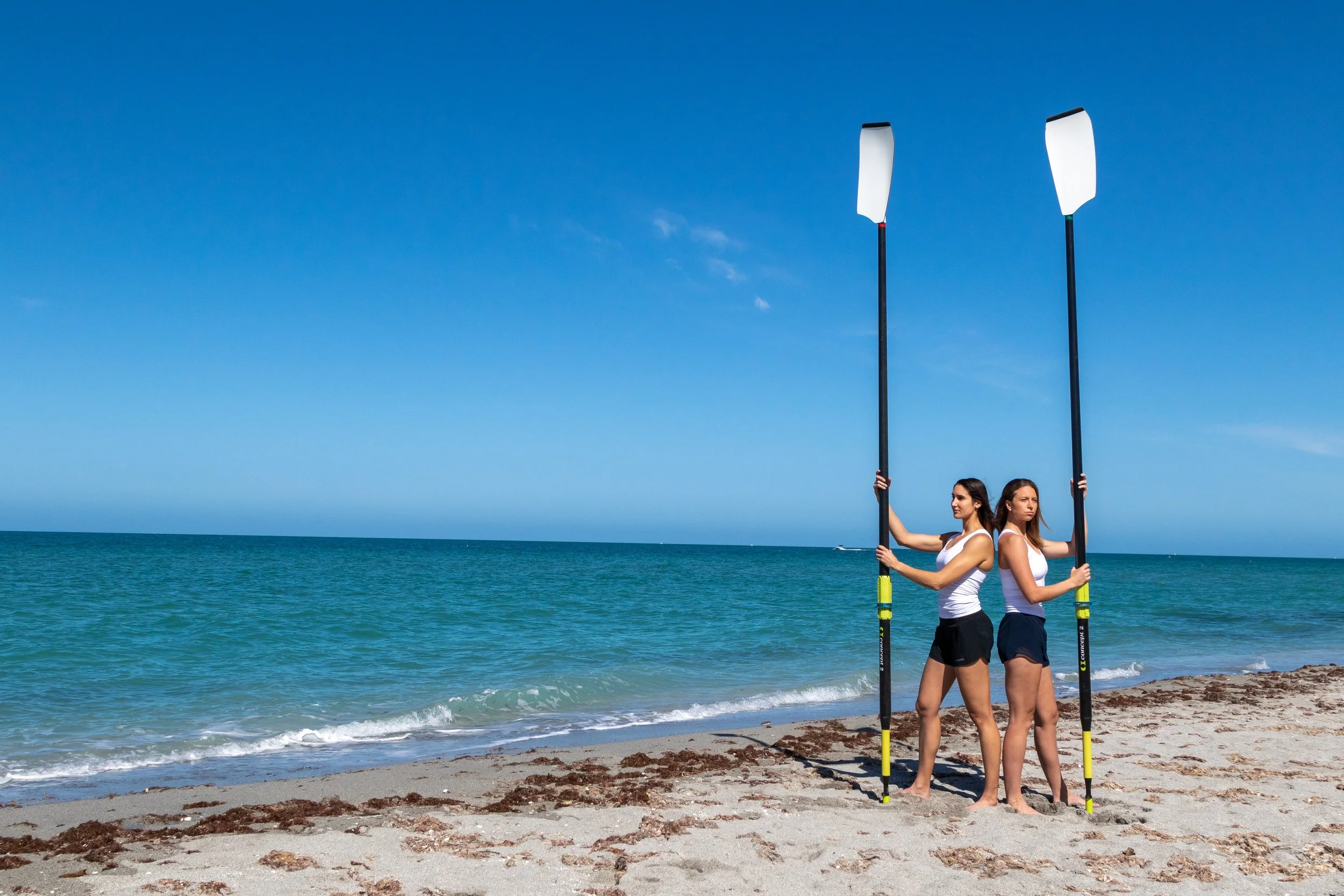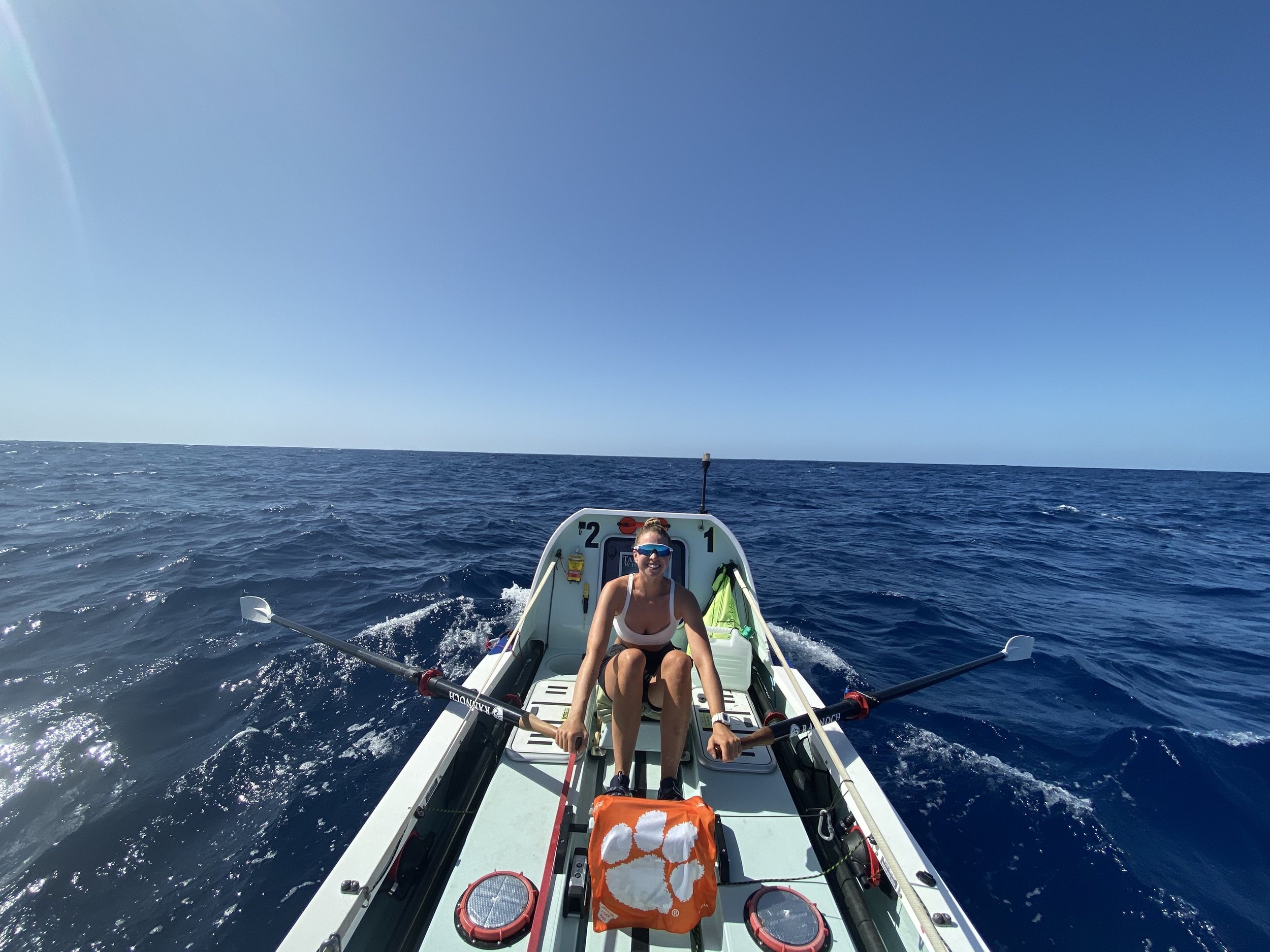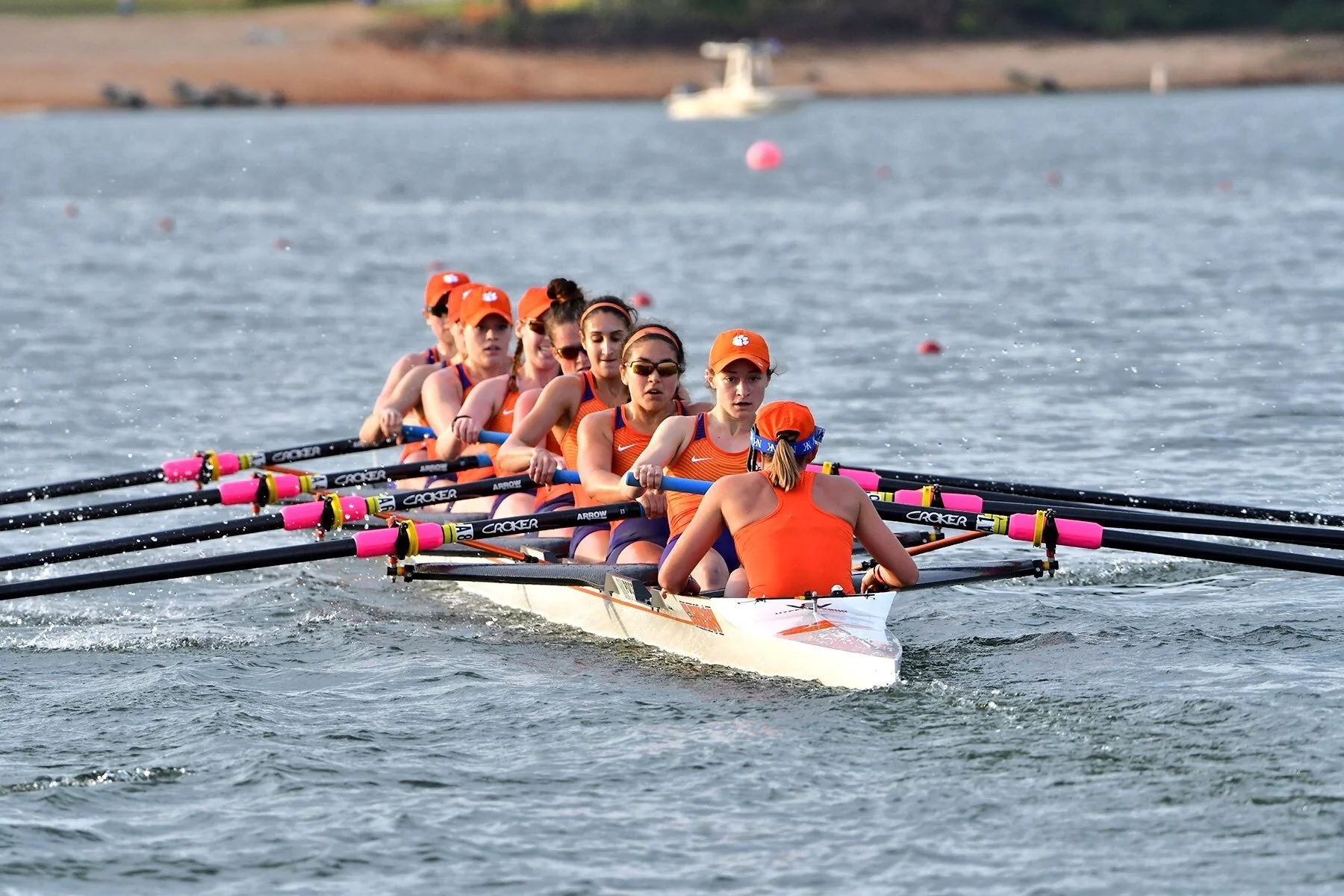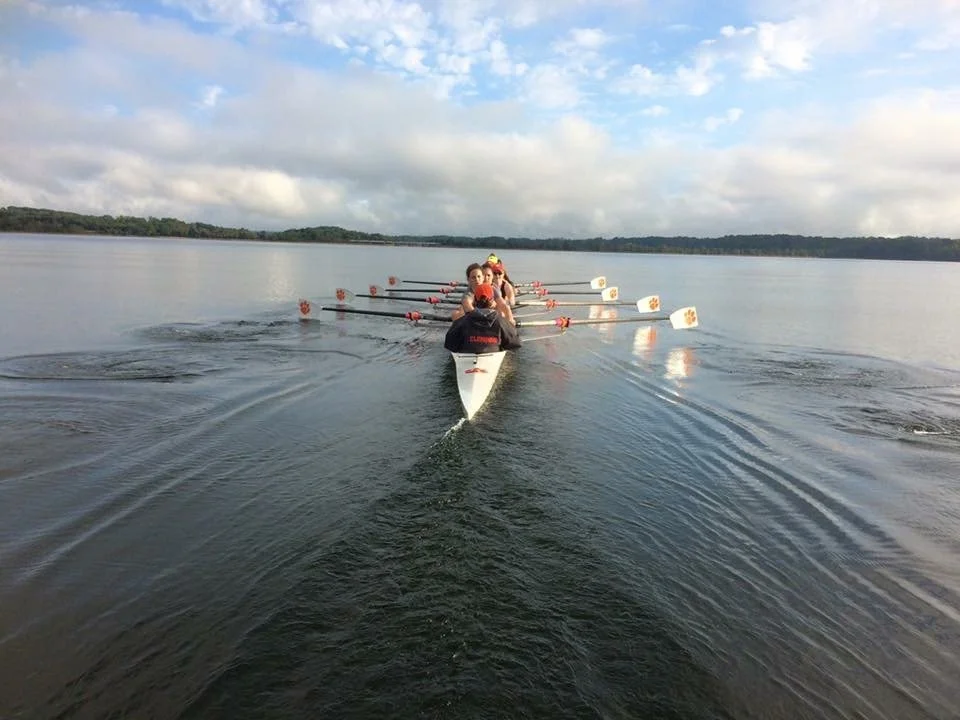Time Out: Quick Q&A With Sports Tech Leaders - United Row
Former Clemson Rowers and Women in STEM, Anna McLean & Jenny D'Anthony, will embark on The World’s Toughest Row, rowing 2800 miles across the Pacific Ocean from Monterey Bay, CA to Kauai, HI, on June 12, 2024. Their effort to row in 2-hour intervals around the clock, facing physical exhaustion, sleep deprivation, seasickness, total isolation, 60 ft waves, storms, and wildlife, is expected to take 60+ days.
Jenny from the US, and Anna, from the UK, known together as Team United Row, are united with each other, their cause, and you, their supporters.
WiST proudly sponsors United Row, and we invite you to join us. Show your support for their efforts which raise money for Hear Her Roar, a nonprofit committed to providing the resources, experiences, and opportunities for female student-athletes to excel. For more info, email unitedrowcorp@gmail.com.
Q: Tell us about the tech you use in a brief overview:
A: Our 24ft ocean rowing boat will be equipped with everything we need to survive at sea. It is essential we know how to operate, maintain, and troubleshoot our equipment. Some of the essential pieces of equipment are listed below.
Desalinator - Equipment that removes salt and minerals from ocean water to provide life-sustaining drinking water. A handheld desalination pump will also be brought as an emergency backup.
Para-anchor - A device streamed downwind from the boat in heavy weather to hold the bow of the boat to the wind. It is the marine version of a parachute that inflates with seawater to provide hydrodynamic drag.
Very High Frequency (VHF) Marine Radio - Two-way communicator (transceiver) that can transmit and receive messages to and from other boats, marinas, Coast Guard, bridges, etc., within line of sight. Used to contact other ships via Digital Selective Calling (DSC) or send emergency distress messages to the Coast Guard.
Chart plotter - A device that integrates GPS data with an electronic navigational chart (ENC) and uses Automatic Identification Systems (AIS) transponders to provide position, identification, and other information about nearby ships.
Liferaft - Small, inflatable, rigid raft carried onboard our boat in case of sinking or a non-self-righting capsize. The liferaft is connected to our boat by a painter line and in case of emergency, we board the liferaft, cut the painter, deploy the drogue (sea anchor), close the door, and maintain the boat (e.g., pump out any water).
EPIRB - Emergency Position Indicating Radio Beacon under the COSPAS-SARSAT system. In case of emergency, this device is activated to alert search and rescue services and indicate our location.
Personal Locator Beacon (PLB) - PLBs work like EPIRBs but are much smaller in size and are registered to an individual, whereas an EPIRB is registered to the boat.
Autopilot - A system used to control the path of our boat. We enter our desired heading into the control unit and the drive unit adjusts the rudder position accordingly. As a last resort, we will have the ability to use manual foot steering. We plan to bring three autopilots on board and change them out periodically to prevent draining the battery.
Solar panels - Our solar panels provide all the energy needed to power our essential onboard equipment. When the photovoltaic (PV) panels are exposed to photons of sunlight, an electrical charge is produced. DC electricity is then converted to alternating current (AC) by an inverter. We need to be diligent in conserving battery power, especially during extended periods of cloud coverage.
Q: You are raising money for Hear Her Roar, a nonprofit that is focused on propelling the future of women in sports, education, and leadership. Why are you passionate about this cause? What is the impact of Hear Her Roar?
A: We are passionate about leveling the playing field for girls and women in athletics, academics, and leadership positions. Females are under-represented and under-recognized in these essential categories. Hear Her Roar is committed to providing the resources, experiences, and opportunities for female student-athletes to excel at Clemson and beyond. Our personal experiences as Clemson student-athletes impressed on us the skills, confidence, and personal development made possible by access to exceptional education, athletic program, and extracurricular involvement.
Q: You both are women in STEM for your day jobs; how does this translate to using tech for this expedition?
Jenny A: I am a biomedical engineer for the medical device company Medtronic. My daily activities often include problem-solving, root cause analysis, and implementing process optimizations. I manage corrective actions and quality improvement activities to ensure the overall quality of our life-changing and life-saving medical devices. Attention to detail, equipment troubleshooting, thinking analytically, and responding with urgency are all transferable skills for our Pacific expedition.
Anna A: We always say there is power in technology, but it wasn’t until I was in the middle of the Atlantic Ocean in my 24ft rowing boat, battling 40ft waves, and still able to hear the comfort of my mom’s voice on the end of the phone that I realized just how powerful technology is. I work for Hitachi Solutions as a business technology consultant advising companies on their future strategy & IT roadmaps. Having truly leveraged technology to its full potential during my first ocean row, I recognize just how important it is to do so both on the water and on land for organizations too.
Q: What is your inspiration for doing this journey?
Jenny A: My inspiration for pursuing this crazy dream and challenge is my dad. He has consistently encouraged me in sports, be it basketball, cross-country, or rowing. He always reminded me to treat every game or race like it was my last because someday it will be. He also taught me the importance of hard work, resilience, and not taking yourself too seriously. He would wake up every day at 4 am to work out before going to work and tried out for semi-pro football at 40 years old, having never played more than some backyard pickup. He might not have made the team, but he also didn’t count himself out before giving it a try. My dad is the strongest fighter I know, in good health and in poor health, and I absolutely cannot wait to see him at the finish line.
Anna A: We all have dreams, however big or small, but following those dreams whilst juggling a full-time job, family, or even financial struggles can be so difficult. My inspiration for doing this is all those people out there who have sacrificed and risked so many things to get to where they are today and those who have supported them in doing so. Despite the many challenges Jenny & I will face in the lead-up to this once-in-a-lifetime journey, and during our time in the Pacific, I continue to think of those who have overcome challenges, gone beyond their comfort zone and achieved the seemingly impossible, hoping to follow in their footsteps.
Q: As former Clemson Rowers, what did your experience as a collegiate athlete teach you?
A: As student-athletes, it was essential that we practice time management and compartmentalize our day. Juggling rowing, school, work, and whatever time remained for a social life, time blocking was a necessity. We learned how to work hard even when circumstances were not ideal, and we were sore, tired, or stressed. This taught us that sacrifices are necessary to achieve your goals, but it makes achieving them all the sweeter. Our rowing team was our family away from home and sharing all the highs and lows with them strengthened our bond. Rowing is the ultimate team sport, requiring complete synchrony between everyone in the boat, so it was important to have each other's backs both on and off the water.
Q: What advice do you have for other young women looking to get into STEM?/what is your advice to current collegiate athletes who are interested in STEM?
Jenny A: Don’t sell yourself short. Go after it enthusiastically and know you are capable of whatever you put your mind and your time towards. Know that it will require sacrifices. You will become accustomed to the early morning alarm, racing to class with wet hair from your shower, two-a-day practices, and late-night studying sessions, but never lose sight of your why, and remember that taking time to recharge is equally as important as all your hard work. Remember, you get to do this!
Anna A: The acronym STEM can be scary and intimidating, some even portraying it as having to be the best at math or science, but this is not the case. STEM is about being creative, innovative, and thinking outside the box. It’s about having fun whilst challenging your mindset, your skills and thinking about the future in new ways. Do not be afraid to go into a STEM role because there is a world of opportunities out there within STEM that suit everyone and one to suit you too!





